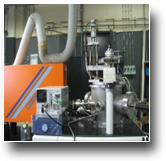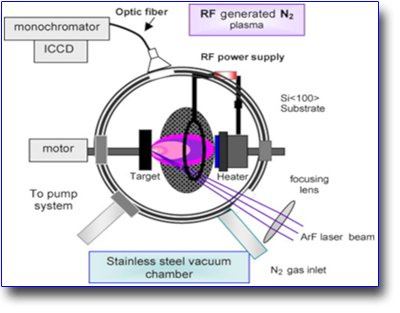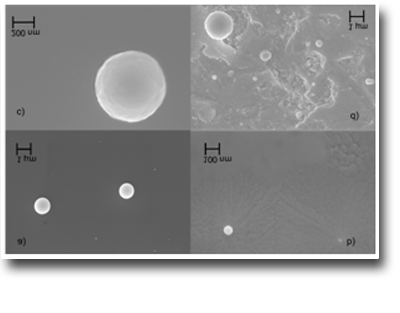
TECHNICAL SPECIFICATIONS
-
high vacuum pressure <10; partial pressure with inert or reactive gases in the range 0.1 - 100 mbar< 10-7mbar; ;
-
excimer laser - ArF (Lambda PhysikCOMPex 102);
-
duration of the single impulse: 30 ns;
-
wavelength: 193 nm;
-
Repetition Rate: 1 - 20 Hz;
-
energy of the single pulse: 0 - 120 mJ;
-
-
rotating multi-target system with 3 possible slots;
-
substrate heating up to 800 ° C;
-
home-made system for micrometric handling of the substrate
-
target-substrate distance: 3-10 cm
-
possibility of carrying out plasma-assisted depositions using a 13.56 MHz RF generator (mod. Huttinger PFG 300, max. power 300 W)
AVAILABLE TECHNIQUES
- Pulsed Laser Deposition in HV or reactive atmosphere
SAMPLES
The mechanical integrity of the samples is required since they are mounted in a vertical position;
-
Sample size 4 x 4 cm2 (maximum), 1 x 1 cm2 (ideal);
USED FOR
-
Deposition of thin films of:
- Carbon based materials
- Semiconductors (e.g., AlN)
- thermoelectric and thermionic materials (e.g., PbTe, ZnSb)
- borides, carbides and oxides (e.g., WC)
- alloys
CASE STUDIES
Carbon nitride films by RF plasma assisted PLD: Spectroscopic and electronic analysis
- Carbon nitride (CN) thin filmsx) were grown on Si <100> by ns-ArF (193 nm) laser ablation on a pure graphite target, in a low pressure N2 plasma generated with RF, and were compared with samples grown with PLD in a pure nitrogen atmosphere.
See: E. Cappelli et al. Appl. Surf. Sci. 257 (2011) 5175-5180


ZnSb-based thin films prepared by ns-PLD for thermoelectric applications
ZnSb-based nanostructured thin films were produced by Pulsed Laser Deposition (PLD) using an ns-ArF laser (193 nm) and a multi-target deposition system. The films were prepared following a multi-layer structure, obtained by adding different dopants (Cr, Ag) inside the ZnSb matrix.
See: A. Bellucci et al., Appl. Surf. Sci. 418 (2017) 589-593

 English (UK)
English (UK)  Italiano (Italia)
Italiano (Italia)